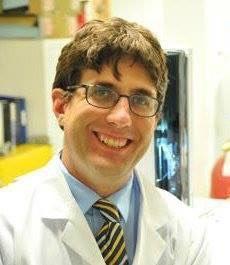
2 minute read
Doctor Interviews
We work with a number of practitioners across the country, all with one common goal in mind: better health for their clients. We spoke to Dr. Eric Dorninger of Roots and Branches in Boulder, CO about his experience with patients with CIRS, or Chronic Inflammatory Response Syndrome. We also spoke to Dr. Matt Pratt-Hyatt, a PhD in Cellular and Molecular Biology who has worked in research and development.
Dr. Eric Dorninger Roots and Branches
Advertisement
When talking to Dr. Dorninger, he often refers to himself as a “Doctor of Mystery Illness” when referring to his CIRS patients. He found that, when studying medicine, he was more interested in the “Why?” of chronic illnesses not just the “What”. His hope is to help patients graduate out of healthcare by removing the obstacles to cure the exposure.
“In 2013, we got 16 inches of rain in one week in Boulder, CO. That is our annual rainfall, in one week. That was the infamous 2013 Boulder, CO floods, and we have very hard clay here. We don’t have soil that absorbs well and we have a lot of rock. When you have that much rain coming down the mountains and flat irons, it’s going to literally bowl into our flood plains and so many people got washed out, wiped out, or flooded... I thought, ‘I’m living in a semi-arid desert out here in Colorado, I didn’t think I’d have to know mold.”
When asking Dr. Dorninger about the impact of environmental factors on his patients, he claimed,
“My doctoring is important for managing the case and diagnosis, but if we can’t get the patient removed from biotoxin exposure, they won’t graduate”
When talking to Dr. Matt Pratt-Hyatt, we heard about treatment and discovery more from the perspective of analysis. With a PhD in Cellular and Molecular Biology, Dr. Pratt-Hyatt has focused more on the data and functional medicine stance.
“I have been very lucky to never experience mold issues myself, but it was very surprising to me how pervasive mold illness is. When I came to The Mold Pros, I thought maybe 5% of the clients we were working with would have mold problems. However it turned out to be like 20-33%. It really is a driver of longterm illness.”
During the interview, we asked Dr. Pratt-Hyatt what he felt was the first step to remission for mold illness, he explained,
“There are may first steps that you need to take to remission. First, is to figure out there is a problem, usually through testing. Then, a person needs to find out where the exposure came from; this is done through inspection. Finally, a person needs to find a good practitioner who has experience working with patients suffering from mold exposure.”
Dr. Matt Pratt-Hyatt PhD The Mold Pros








